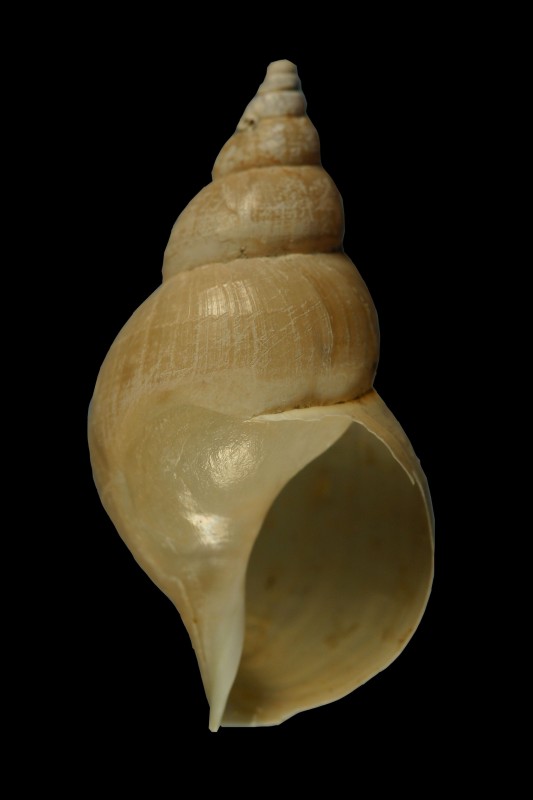A 3-D seashell spiral
In our initial article we focused on the height of the seashell we named Humphrey. You can see him here in the photo below.

Fig 1: Humphrey
Copyright: Steve Wilkinson
Conchological Society
In this article we look at the other dimension of our seashell - which is the width. We make it our now challenge to:
Devise a mathematical equation that describes Humphrey's width in terms of the rotation angle around the coiling axis of the shell. And to use what we know to draw a 3D curve.
Taking the measurements #
We measured the dark line below each worl, . Here we cannot really see the width of the last world, but we can extrapolate the width for worl number . Here are some measurements from me, given that the height is mm [1]:
We note that one worl is equal to a rotation around the coiling axis (see a previous article for some insights as to why this is useful).
| Width (mm) | ||
|---|---|---|
| 1 | 1.78125 | |
| 2 | 2.375 | |
| 3 | 4.0375 | |
| 4 | 6.175 | |
| 5 | 10.6875 | |
| 6 | 17.21875 |
The width equation #
We observe from these measurements that the growth is not linear, so we use the same intuition as before - this time using the width, not the height. As before we end up with:
Where
- is the rotation angle,
- is the initial width and
- is the growth factor.
Like before we can use these equations:
So for the Humphrey width we get:
And we end up with this formula:
The width spiral #
We can now use the work we did previously for spirals to get a parametric equation for the width:
Where
By inspecting the plot of this spiral we can see that the measurements for each worl fits this model nicely.

Fig 2: Plot of the Humphrey width spiral
Combining widths and heights #
Using the function of width (Eq. 1) and the function for height we discovered before, we can now find a function that represents a three dimensional spiral for Humphrey.
The idea is straight forward: we use Eq.1 as basis on the XY plane, and for the Z coordinate we use the height function we had before. But we have three transformations to incorporate to in order align our mathematics with the photograph we have of Humphrey.
If you look at Fig 2 and compare it to the photo you will notice that the winding of Humphrey's spiral (in the photo) goes clockwise, while Fig. 2 goes the other direction. This is our first transformation, we want tot mirror around the y axis, so we switch the sign of the coordinate.
The second transformation is adjust the width. Notice that Fig. 2 shows the total width. But a shell rotates around it's coiling axis with a radius of half the width. So we want the radius of the and coordinates to be half of what they are showing in Fig. 2.
And the third transformation is simply to increase the length downward, so that the shell is not upside down. So, we switch the sign of the coordinate as well.
Let's summarise what we have learnt thus far.
We have a general equation for growth:
Where
- is some initial value
- is some growth factor
- is an angle of rotation
The and components are defined, also in terms of as
Where
- is the initial width
- is the width growth factor
- is the initial height
- is the height growth factor
For Humphrey, we have calculated all these values before:
Leading us to this parametric equation:
Where
In Fig. 3 below we see a plot of this equation. We can see the total height and total width are correct, and that the photo corresponds nicely to the proportions of the spiral in the figure.

Fig. 3: Plot of the Humphrey spiral in 3-D
Conclusion #
In a manner very similar to the way we discovered the function for the height, the function for the width of a seashell is described here. We also saw how looking at the spiral can help us to verify that our model fits.
In addition, we took a step into the third dimension - we used both spiral equations to render the dark lines of Humphrey's worls.
References #
- Next: Torus in Asymptote
- Previous: A seashell spiral